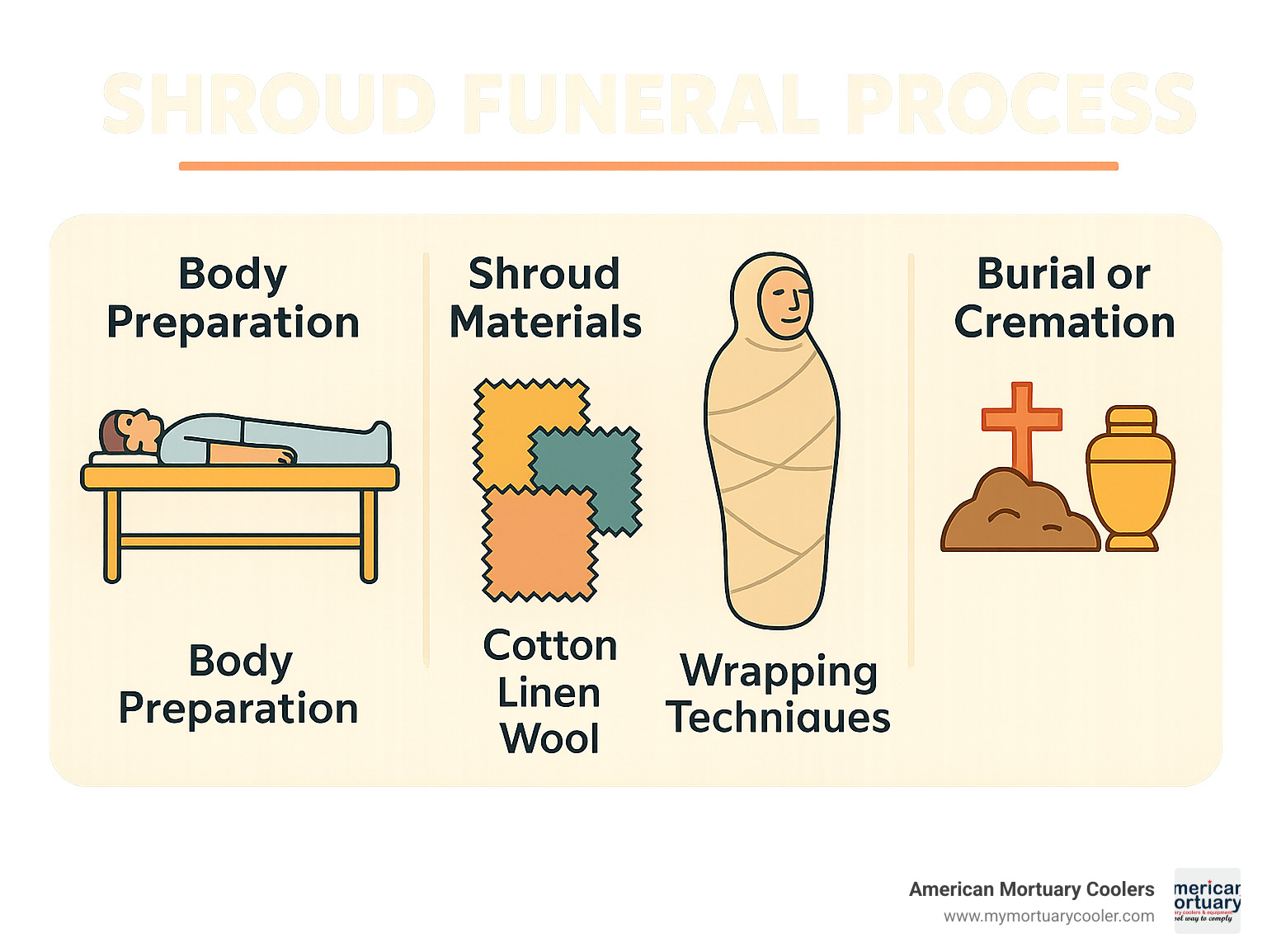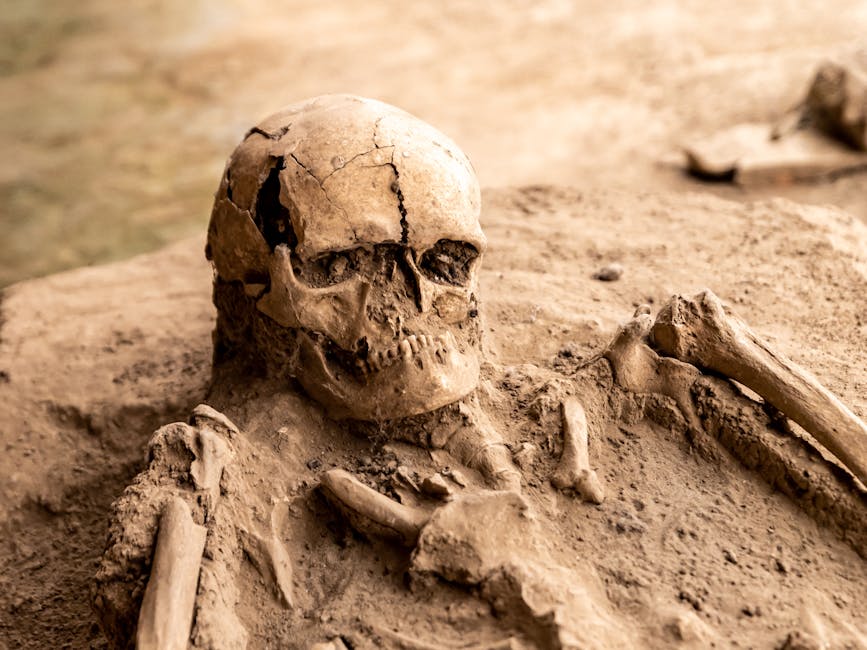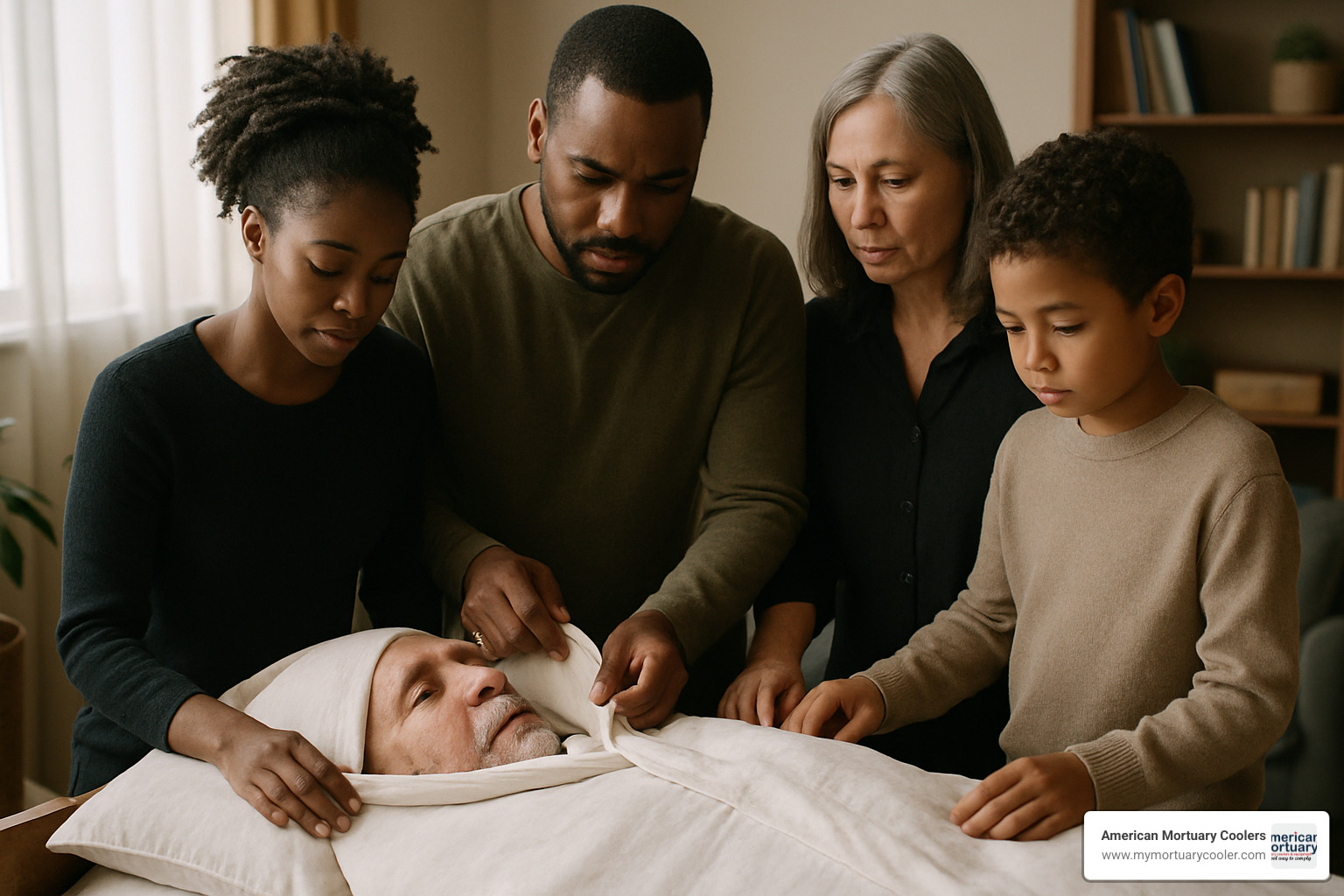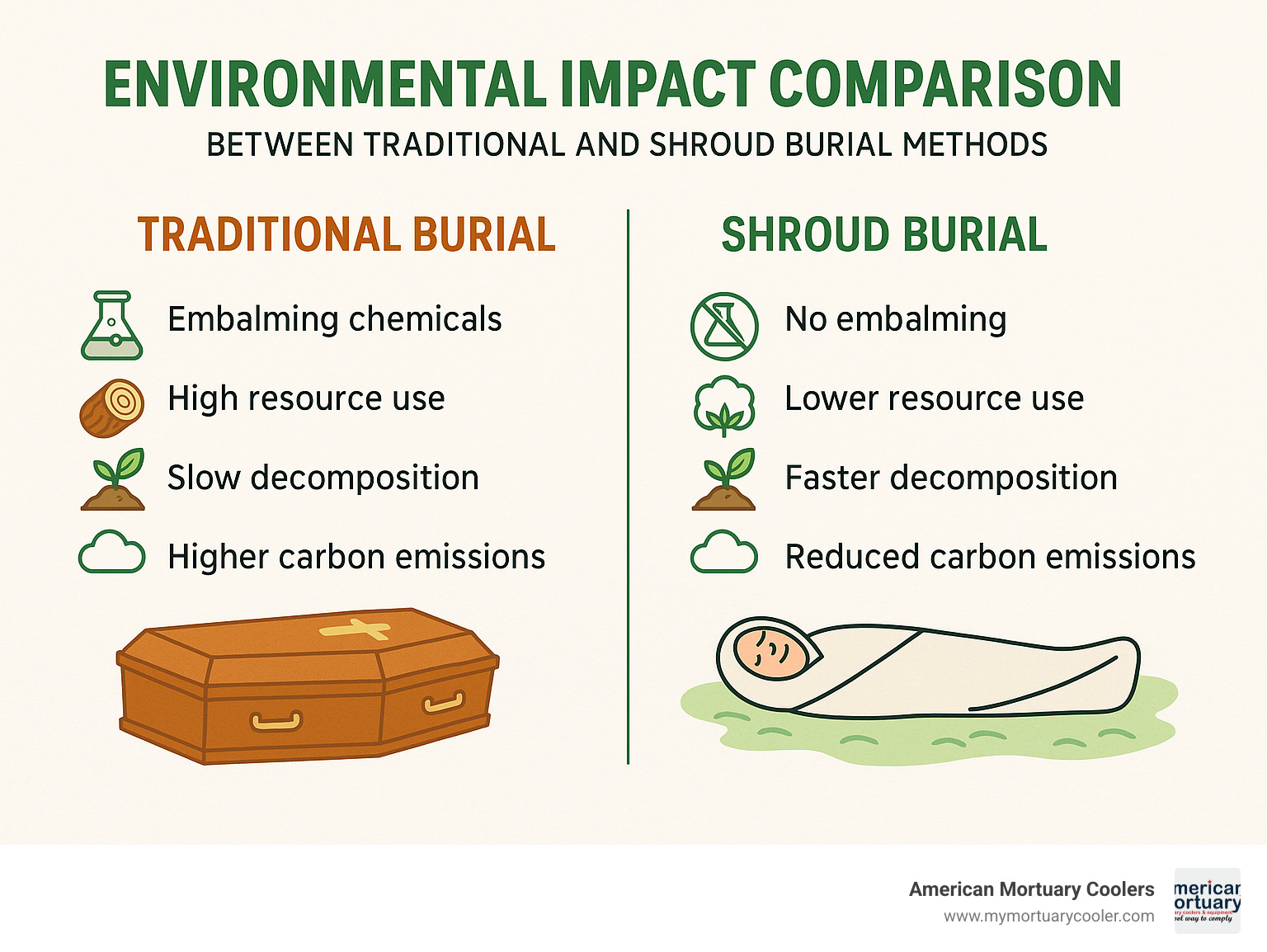The Timeless Tradition of Shroud Burial
A shroud funeral is a burial practice where the deceased is wrapped in a natural cloth (typically cotton, linen, or wool) instead of being placed in a conventional casket. This ancient practice is experiencing renewed interest due to its environmental benefits and meaningful simplicity.
Quick Guide to Shroud Funerals:
- Definition: A cloth wrapping for the deceased instead of a casket
- Materials: Cotton, linen, wool, silk, bamboo (100% biodegradable)
- Cost: $295-$1,300 (vs. $2,000-$10,000+ for caskets)
- Benefits: Eco-friendly, cost-effective, culturally significant
- Legal Status: Permitted in most areas (check local cemetery regulations)
For thousands of years, humans have prepared their dead and laid them to rest in burial shrouds. This practice spans cultures and religions worldwide, from Jewish and Muslim traditions to Christian customs and modern green burial movements.
When we're born, our first experience is to be swaddled—wrapped in a cozy cloth that offers care and comfort. A shroud funeral provides a similar experience at the other end of life, creating a full-circle ritual that many find deeply meaningful.
I'm Mortuary Cooler, a national-level mortuary equipment supplier with extensive experience helping funeral homes implement various end-of-life practices including shroud funeral preparations.

Shroud funeral terms made easy:
Shroud Funeral Basics: What It Is and Why It Matters
When you strip away the complexity of modern funeral practices, you find something beautifully simple at their core: the shroud funeral. This ancient tradition dates back thousands of years, yet feels surprisingly relevant today.
A burial shroud is simply a large piece of cloth that wraps around your loved one before their final rest. You might hear it called a winding sheet, grave clothes, or cerecloth—different names that all point to the same meaningful practice of gently enfolding the body in natural fabric.
There's something profoundly honest about a shroud funeral. Instead of sealing away our loved ones in elaborate containers, we acknowledge the natural cycle of life by returning them to the earth simply and directly.
| Feature | Shroud Burial | Casket Burial |
|---|---|---|
| Materials | Natural fibers (cotton, linen, wool) | Wood, metal, synthetic fabrics |
| Cost | $295-$1,300 | $2,000-$10,000+ |
| Environmental Impact | Minimal; biodegrades in 9 months-2.5 years | Significant; slow decomposition, resource-intensive |
| Family Involvement | Often high; can participate in preparation | Typically limited to viewing |
| Embalming Required | No | Often yes (though not legally required) |
| Vault Required | No | Often yes (cemetery requirement) |
Curious about the embalming process that most shroud funerals skip? Check out our article on a practical guide to mortuary embalming and how it works.
What Is a Burial Shroud?
At its heart, a burial shroud is a cloth that accepts the body for its final journey. Unlike caskets that separate our loved ones from the earth, shrouds allow for a gentle return to nature. The shroud serves both practical and symbolic purposes—it preserves dignity by covering the body while facilitating natural decomposition.
Today's shrouds honor tradition while adding thoughtful modern touches. Many include discreet carrying handles, secure tie straps, and sometimes thin wooden boards for easier transport.
Key Materials for a Shroud Funeral
The fabric you choose for a burial shroud carries both practical importance and emotional significance:
Cotton feels familiar and comforting—the same fabric that might have been in the deceased's clothing or bedsheets. Affordable and fully biodegradable, simple muslin cotton shrouds remain the most popular choice.
Linen connects us to history, having wrapped bodies for thousands of years across many cultures. Its natural elegance and strength make it a beautiful choice that breaks down completely in soil.
Wool provides warmth even in death and has been used for centuries, particularly in cooler regions. Its natural antimicrobial properties and complete biodegradability make it both practical and earth-friendly.
Bamboo represents modern sustainability, offering exceptional softness with minimal environmental impact.
Most modern shrouds thoughtfully include cotton webbing handles for dignified carrying, tie straps to secure the wrapping, and absorbent linings for practical care of the body.
How a Shroud Burial Differs from a Traditional Casket Burial
Choosing a shroud funeral means embracing a fundamentally different philosophy about death and our relationship with the earth.
When we place a shrouded body directly into the soil, we allow for complete integration back into nature. The body makes contact with the earth, and decomposition happens as it has for millennia—naturally and completely. In contrast, traditional burials often include barriers like sealed caskets and concrete vaults that prevent this natural process.
The timeline changes dramatically too. A shrouded body typically returns to the elements within 9 months to 2.5 years, depending on local soil conditions. Bodies in conventional sealed burials might take decades or even centuries to decompose fully.
Shroud funerals generally skip embalming chemicals, which can contain formaldehyde and other substances that eventually leach into groundwater. Instead, gentle refrigeration (like the systems we provide at American Mortuary Coolers) keeps the body preserved until the time of burial.
Cultural & Historical Roots of Shroud Funerals

When you look back through human history, you'll find that wrapping our departed loved ones in cloth is about as old as humanity itself. Long before we crafted elaborate coffins or built mausoleums, our ancestors were tenderly wrapping their dead in animal skins and woven plant materials.
The ancient Egyptians took this practice to an art form, using intricate linen wrappings as part of their mummification rituals. By medieval times, the shroud had become everyone's final outfit, regardless of social standing.
In 1666, England actually passed laws (the Burying in Woollen Acts) requiring people to be buried in wool shrouds to boost the struggling domestic wool industry. It shows how even our burial practices have been shaped by economic and political concerns throughout history.
You can explore more visual representations of shrouds throughout history in the Shrouds Media collection at Wikimedia Commons.
Religious Traditions That Accept Shroud Funerals
Many of the world's major religions have accepted the shroud funeral as a meaningful way to prepare the deceased for their final journey.
In Jewish tradition, the dead are dressed in simple white garments called tachrichim, typically made of pure cotton or linen. These include a tunic, hood, pants, and a belt tied in the shape of the Hebrew letter shin (ש).
Muslim burial practices are similarly thoughtful, with the body wrapped in a white cloth called a kaffan. The simplicity is intentional – in death, we are all equal before God. Men are typically wrapped in three layers, women in five.
Early Christians adopted the winding-sheet, inspired by the burial cloth of Jesus described in the Gospels. In Orthodox Christianity, special cloths called the epitaphios and Trisagion shrouds play important roles in funeral ceremonies.
The Bahá'í Faith also specifies that the body should be wrapped in a simple silk or cotton shroud before burial, emphasizing dignity and respect in this final act of care.
From Antiquity to Modern Green Burial Movements
The evolution of burial shrouds tells a fascinating story about our changing relationship with death and the environment:
Our earliest ancestors used whatever materials they had – animal skins, leaves, and grasses – to wrap their dead with care. As civilizations developed, Egyptians, Greeks, and Romans created more formal shrouding practices.
During the Medieval period, shrouds became standardized in many cultures. The fabric and design often revealed your social status. By the Victorian era, while elaborate mourning customs evolved, the basic practice of shrouding continued.
The 20th century brought a major shift. The rise of the modern funeral industry, with its emphasis on embalming and caskets, pushed the shroud funeral to the margins in Western societies.
Today, we're witnessing a revival. The green burial movement has breathed new life into this ancient practice, with people choosing shroud funerals as an environmentally conscious alternative to conventional methods. Modern shrouds often feature practical adaptations like carrying handles and absorbent linings while honoring the simplicity and beauty of tradition.
At American Mortuary Coolers, we've had a front-row seat to this revival through our work with funeral homes across the country. What was once necessity has become conscious choice – a way to honor our loved ones while caring for the earth that will receive them.
Planning a Shroud Funeral: Process & Personalization

There's something deeply moving about caring for a loved one's body after death. Planning a shroud funeral opens up this possibility, creating space for a more hands-on, intimate farewell than most modern funeral practices allow.
Your first decision will be whether to partner with a funeral home experienced in shroud funerals or to handle more aspects yourself. Either way, you'll want to verify that your chosen cemetery or crematorium accepts shrouded bodies—policies vary widely across the country.
Without embalming, timing becomes important. The body will need to be buried or cremated within about 24-72 hours, or kept properly refrigerated. At American Mortuary Coolers, our equipment helps funeral homes maintain proper body preservation without chemicals.
Transportation requires some thought too. A shrouded body needs proper support during movement, typically using a board or tray. You'll also need to decide where the wrapping will take place—at home, a funeral home, or another location—and which family members might want to participate.
Don't forget to coordinate with your chosen cemetery early in the planning. Some have specific requirements for shroud burials, such as particular lowering devices or ground preparation methods.
Step-by-Step: Preparing and Wrapping the Body
The process of preparing a body for a shroud funeral reflects thousands of years of human tradition, adapted for modern needs:
The journey typically begins with washing. This gentle cleansing serves as both practical preparation and meaningful ritual. Some families follow specific religious protocols, like the Jewish tahara ceremony or Islamic ghusl washing, while others create their own meaningful approach.
Next comes preparing the shroud itself. You'll want to lay it flat on a suitable surface, positioning any absorbent padding where needed. Hospital-grade absorbent materials are recommended to manage potential fluid leakage with dignity.
Positioning the body requires care and respect. Most traditions place the deceased supine, with arms either at the sides or folded across the chest.
The actual wrapping varies widely by tradition. Some cultures use a single large cloth, while others employ multiple pieces, like the Muslim kaffan with its 3-5 separate sheets or the Jewish tachrichim with its specific garments.
Secure the shroud with biodegradable ties or the fasteners included in modern commercial shrouds. These should be snug enough to keep the shroud in place but not overly tight.
Personalizing the Shroud Ceremony
A shroud funeral offers unique opportunities for personalization that simply aren't possible with conventional caskets. The shroud itself becomes a canvas for expressing love and remembrance.
Many families incorporate natural elements into the shroud. Tucking sprigs of rosemary for remembrance, lavender for peace, or rose petals for love creates both visual beauty and gentle natural fragrance. These botanicals will decompose alongside the body, returning to the earth together.
Written messages offer another powerful way to personalize. Some families invite guests to write directly on the shroud with fabric markers, creating a mix of memories and well-wishes. Others tuck small cards or notes within the folds of the cloth.
The textile itself can carry deep meaning. Using a beloved quilt, a scarf worn on special occasions, or fabric that reflects cultural heritage adds layers of significance.
The act of wrapping can become a ceremony in itself. Family members might each take a turn folding part of the shroud or adding meaningful items. This shared act of care often helps process grief while honoring their loved one's unique life.
DIY & Family-Made Shrouds
Creating a burial shroud with your own hands can be one of the most meaningful ways to prepare for a death. The process connects us to thousands of years of human tradition while expressing personal values.
The simplest approach requires no sewing at all—just a large piece of natural fabric, at least 7 feet square for an adult. Cotton muslin, linen, or wool all work beautifully. This simple wrap can be secured with ties made from the same material.
Those with basic sewing skills might create a more structured shroud with carrying handles and integrated ties. For more elaborate memorial textiles, techniques like quilting, embroidery, or appliqué can create stunning personalized shrouds.
Repurposing meaningful textiles offers another beautiful approach. An heirloom quilt, a cherished blanket, or even a collection of significant clothing items can be adapted to serve as a burial shroud.
When creating your own shroud, remember these practical considerations:
- Choose 100% natural, biodegradable materials
- Ensure the fabric is large enough (minimum 7' × 7' for adults)
- Include sturdy handles for carrying if needed
- Consider absorbent padding for fluid management
- Add a wooden board or supports for stability during transport
Eco, Cost & Legal Considerations of Shroud Funerals
When families ask me about shroud funerals, I often see their surprise at just how much gentler these options are – both on the environment and on their wallets. There's something beautifully straightforward about returning to the earth wrapped simply in natural cloth.
Environmental Impact & Green Credentials
The earth-friendly benefits of choosing a shroud funeral are remarkable when you consider the alternatives. Without embalming chemicals – those formaldehyde cocktails that preserve bodies but eventually seep into our soil and water – the natural cycle continues uninterrupted.
A cotton shroud requires just a fraction of the resources needed for hardwood caskets and metal vaults. When wrapped in a simple shroud, a body typically returns to the earth within 9 months to 2.5 years, depending on your local soil conditions. Rather than sealing away the deceased, a shroud funeral allows them to nurture new life.
Many green burial grounds that welcome shroud funerals double as nature preserves – creating peaceful memorial woodlands or meadows that protect land from development.

What Does a Shroud Funeral Cost?
The price tag for a shroud funeral can be refreshingly modest compared to conventional options. While a basic casket starts around $2,000 (with premium models exceeding $10,000), shroud options span a much gentler range:
The most basic biodegradable shrouds start around $295, while standard muslin options hover near $750. If you're looking for something with built-in handles and support boards, expect to pay between $450-$900. Designer shrouds with intricate embroidery or luxury materials like silk can reach $1,300 or more – still substantially less than most caskets.
Many families find making their own shroud to be both economical and deeply meaningful. With material costs typically between $50-$200 depending on your fabric choices, this DIY approach can significantly reduce expenses.
Of course, there are other expenses to consider beyond just the shroud itself. Green burial plots typically range from $1,000-$4,000 depending on location. Funeral home services generally start around $2,000 for basic arrangements.
Legal Regulations and Cemetery Requirements
"Is this even legal?" is often the first question families ask about shroud funerals. The good news is that in both the US and UK, there's no federal requirement for a coffin or casket for either burial or cremation. The patchwork of regulations comes more from individual cemeteries than from government.
Traditional cemeteries often require rigid containers or vaults – not for legal reasons, but to prevent ground settling as bodies decompose. Green cemeteries, by contrast, specifically welcome shrouded bodies without these containers.
Transportation can be trickier. Some states require bodies to be moved in rigid containers, even if the final disposition will be in just a shroud. This might mean using a board or tray during transport that won't be buried with the person.
Crematoria typically require bodies to be placed on a rigid, combustible tray for handling purposes, even when wrapped in a shroud. This is primarily for safety and practical handling concerns.
Can Shrouds Be Used for Cremation?
Yes, you absolutely can use shrouds for cremation, though there are some practical considerations to keep in mind. Most cremation facilities require the body to rest on a rigid, combustible board or tray for safe handling.
All shroud materials need to be fully combustible, without metal components that could damage equipment or create safety hazards. Natural fibers like cotton, linen, and wool are ideal choices that burn cleanly.
One beautiful aspect of choosing cremation with a shroud is that you can still have a meaningful viewing beforehand. A shrouded body offers a more natural presentation that many families find more emotionally honest than conventional casket viewings.
For more information about selecting the right funeral provider for your needs, check out our guide on choosing a funeral home and services.
Conclusion
The revival of shroud funerals represents something truly special – a return to burial practices that honor our ancestors while embracing modern environmental values. Throughout this guide, we've seen how this simple approach offers profound benefits that speak to both heart and mind.
When we wrap a loved one in natural fibers instead of sealing them in a metal casket, we're making a statement about what matters. We're choosing connection over separation, natural processes over artificial preservation, and often meaningful participation over passive observation.
What makes shroud funerals so compelling to so many families today? It's that rare combination of being both ancient and innovative, traditional and forward-thinking.
The simplicity is part of the appeal. A cotton shroud starting at $295 costs a fraction of even the most basic casket. But the value goes far beyond dollars saved. Families tell us about the healing that comes from being actively involved – whether that's embroidering a special message on the shroud, participating in the washing ritual, or simply being present as their loved one is returned to the earth without barriers.
If you're considering a shroud funeral for yourself or a loved one, here are the practical next steps we recommend:
- Contact green burial grounds in your area, as they're most likely to welcome shroud burials without requiring vaults or containers
- Have open conversations with your family about your wishes
- Consider working with a funeral director who has experience with green burial options
At American Mortuary Coolers, we're proud to support funeral homes across the country as they expand their offerings to include shroud funerals and other green options. Our Tennessee-based team designs and delivers mortuary refrigeration systems that allow for proper body preservation without chemical embalming – an essential service for facilities offering natural burial options.
For funeral professionals interested in expanding their offerings to include shroud funerals, we invite you to learn more about our mortuary equipment and how it supports various funeral practices in our article on mortuary coolers.
The choice of a shroud funeral isn't about rejecting tradition – it's about embracing one of our oldest traditions while honoring our connection to the earth. In doing so, we create a final chapter that reflects what matters most: simplicity, sustainability, and the enduring bonds that connect us all.



















